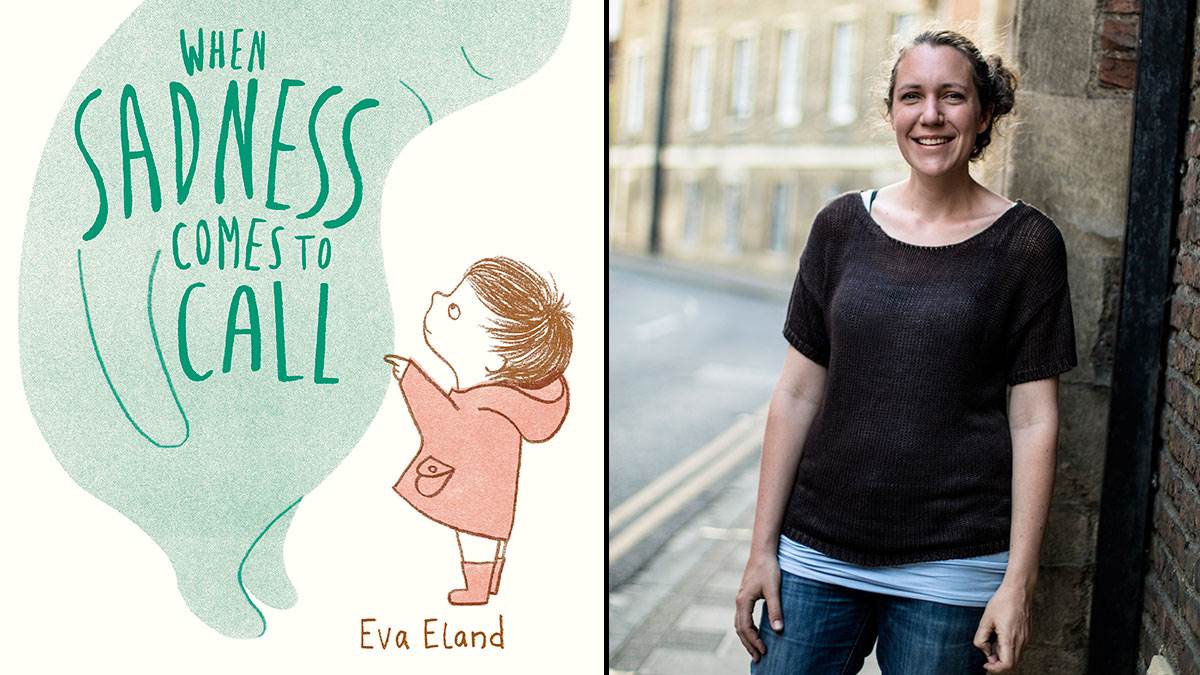'It's okay to feel sad sometimes': Why children need books about difficult emotions
Published on: 10 Mehefin 2019 Author: Eva Eland
Author Eva Eland tells us about her new book When Sadness Comes to Call - and explains how stories can help little ones get to grips with some tricky emotions.

A lot of people ask me where I got my inspiration to make When Sadness Comes to Call – but it's always difficult to find an answer which is both complete and short, as this book grew over a long period of time.
I could pinpoint some moments in time that seem to be important, like finding a piece of paper with some very tiny, rough thumbnails for a manual for 'an unwanted guest' just when I was about to start my Children's Book Illustration MA.
Or I could tell you how I had just decided I wanted to make a comforting book, that could be the equivalent of a hug, but soon realised that perhaps I should understand those 'difficult emotions' better first.
I explored these emotions - like fear, anger and sadness - in my sketchbook and again found myself with the question, 'Wouldn't it be nice if there was a user manual for an emotion like sadness?'
The irony of it struck me as something really funny, but it also spoke to a part in me that's always looking for self-improvement, short cuts and a deeper understanding of life.
At the time I didn't imagine I'd end up with a more serious and compassionate picture book for children – and I have my editor Libby Hamilton and art director Beccy Garrill at Andersen Press partly to thank for that, as they recognised where the power of the book really was and insisted on treating 'Sadness' as an equal.
All these moments and explorations actually still don't say very much about the drive behind it all. But in inspired moments (they're only there occasionally and move swiftly) I've felt very strongly about the need for this book in the world.
Why we need to understand sadness
In developing the book and talking about it with many people, exploring the universal aspects of sadness, I learned to understand it better: how we can accept ourselves with all our feelings, and embrace them with kind, compassionate attention, and how our own deepened understanding of our feelings and willingness to look at them directly also fuels empathy and a feeling of connectedness with others.
The sadness might grow smaller – just by touching it with our attention. It might even disappear completely or get infused with love and gratitude, when we stop resisting the feeling and learn to be compassionate towards it - which of course, in the end, is to be compassionate towards ourselves.
From my memories of being young, and the visits I got from Sadness, I remember it was often surrounded with a feeling of guilt and shame, and sometimes also fear. Most times I could not find an explanation for my sadness, which led me to believe I somehow didn't have 'the right' to feel sad.
I could sense that people around me often didn't really know what to do with my sadness, either. It could upset them or they'd try to cheer me up, or the sadness simply remained ignored. I'd shut down inside myself even more.
How books can help children explore emotions
I know not every child may be as introverted and sensitive as I was, but as children we do learn most from the people around us. And if there is a book that may help adults to show a child that it's OK to feel sad sometimes and that we don't have to fear our emotions or those of others - because we can learn to understand them and deal with them, that they are not alone in feeling like this - I think it can make a difference.
To allow children to explore their emotions will also help them to get to know themselves better and find out what is important to them. And it will give them the opportunity and encouragement to discover just how strong and resilient they already are and can yet become.
I understand that it might not be easy for adults to open up and show a more vulnerable side, especially when they have not learned very well to deal with their own emotions in their own childhood. Or how difficult it can be to let go of the wish to protect children from pain and negative emotions and to allow them to figure things out on their own and make mistakes.
But strong emotions like sadness, disappointment and fear will always be a part of life, and I believe the best way to protect our children from too much pain is to give them the opportunities to learn to deal with them, in a way that suits them, and at a pace they are comfortable with.
A book like When Sadness Comes to Call might give adults and children a stepping stone to start another kind of conversation, and to create that little bit of breathing space for emotions like sadness.
And it might surprise you what your sadness has to say about yourself and what you really long for, if you start listening to it.
Topics: Picture book, Mental health, Features, Feelings






Add a comment